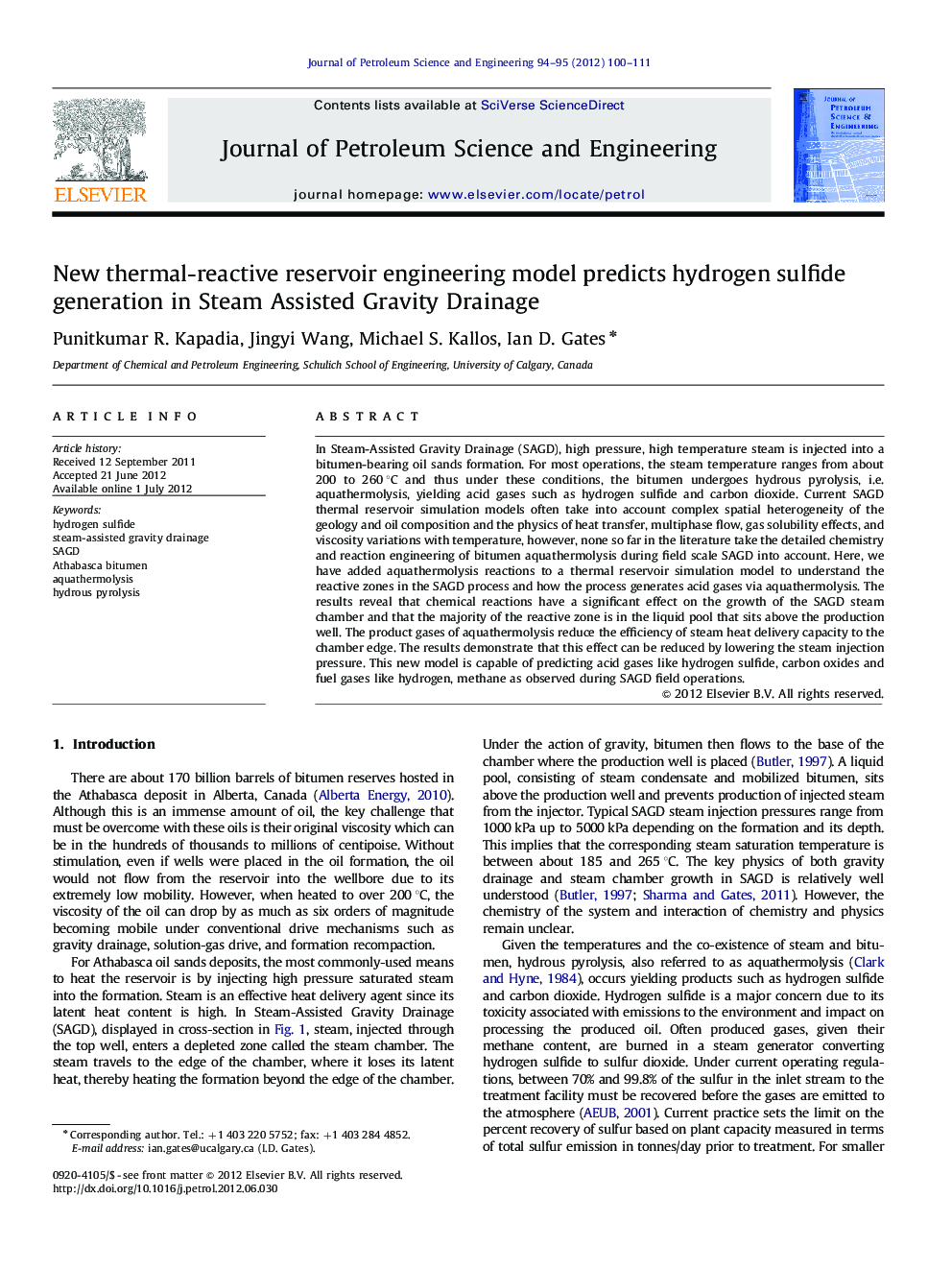| کد مقاله | کد نشریه | سال انتشار | مقاله انگلیسی | نسخه تمام متن |
|---|---|---|---|---|
| 1755465 | 1522844 | 2012 | 12 صفحه PDF | دانلود رایگان |

In Steam-Assisted Gravity Drainage (SAGD), high pressure, high temperature steam is injected into a bitumen-bearing oil sands formation. For most operations, the steam temperature ranges from about 200 to 260 °C and thus under these conditions, the bitumen undergoes hydrous pyrolysis, i.e. aquathermolysis, yielding acid gases such as hydrogen sulfide and carbon dioxide. Current SAGD thermal reservoir simulation models often take into account complex spatial heterogeneity of the geology and oil composition and the physics of heat transfer, multiphase flow, gas solubility effects, and viscosity variations with temperature, however, none so far in the literature take the detailed chemistry and reaction engineering of bitumen aquathermolysis during field scale SAGD into account. Here, we have added aquathermolysis reactions to a thermal reservoir simulation model to understand the reactive zones in the SAGD process and how the process generates acid gases via aquathermolysis. The results reveal that chemical reactions have a significant effect on the growth of the SAGD steam chamber and that the majority of the reactive zone is in the liquid pool that sits above the production well. The product gases of aquathermolysis reduce the efficiency of steam heat delivery capacity to the chamber edge. The results demonstrate that this effect can be reduced by lowering the steam injection pressure. This new model is capable of predicting acid gases like hydrogen sulfide, carbon oxides and fuel gases like hydrogen, methane as observed during SAGD field operations.
► Albertan bitumen reserves −170×109 bbl; SAGD is in situ technology of choice.
► Given operating temperature in SAGD, aquathermolysis yields CO2 and H2S.
► Here, new reaction model proposed to analyze aquathermolysis in SAGD operations.
► Reservoir simulation model predictions match SAGD field data.
► For the first time, results reveal details of spatial evolution of SAGD reactive zones.
Journal: Journal of Petroleum Science and Engineering - Volumes 94–95, September 2012, Pages 100–111